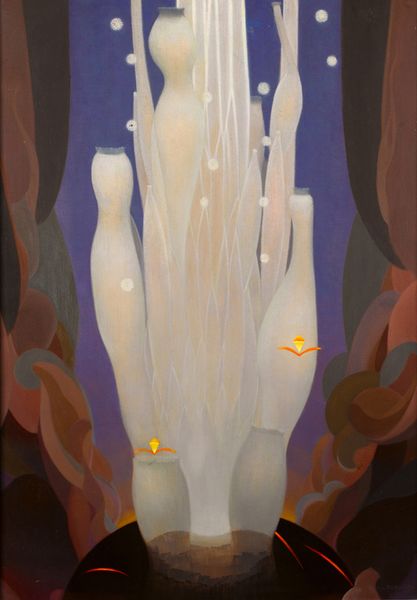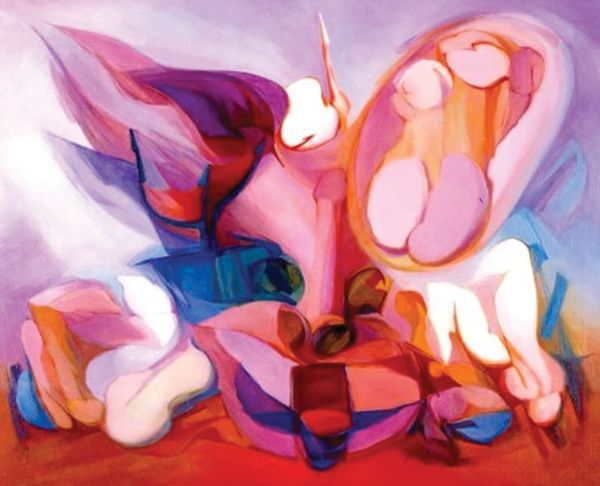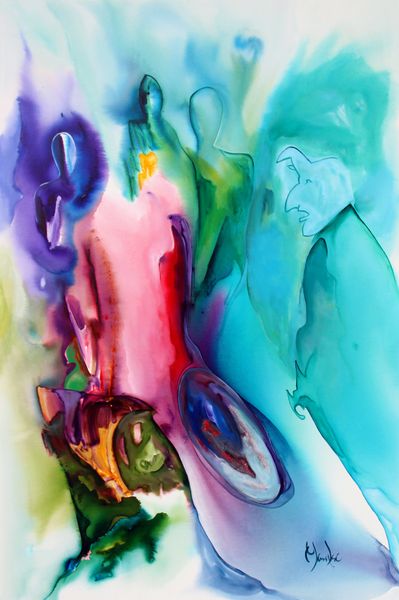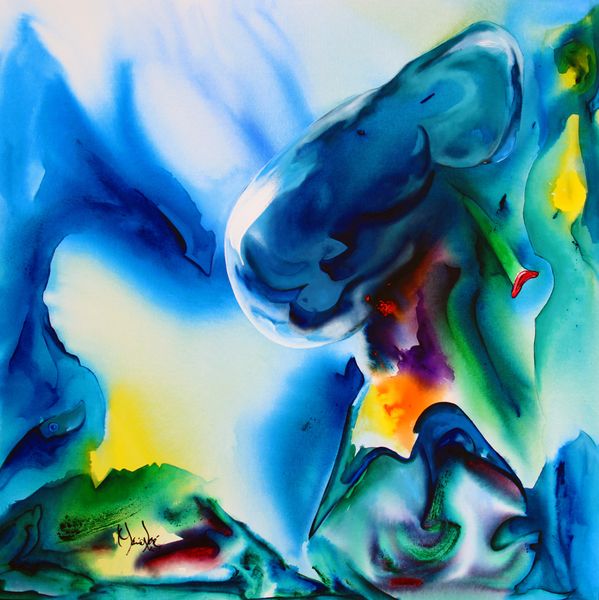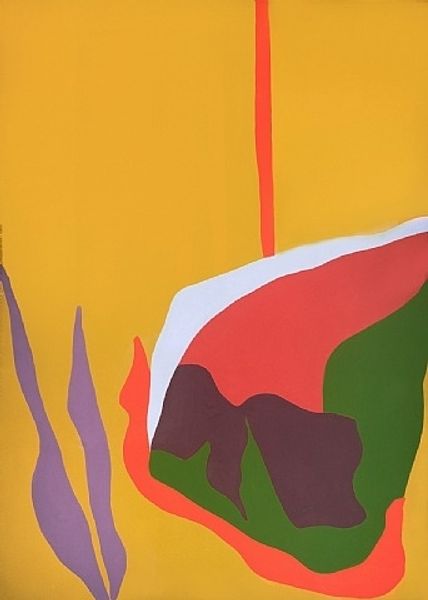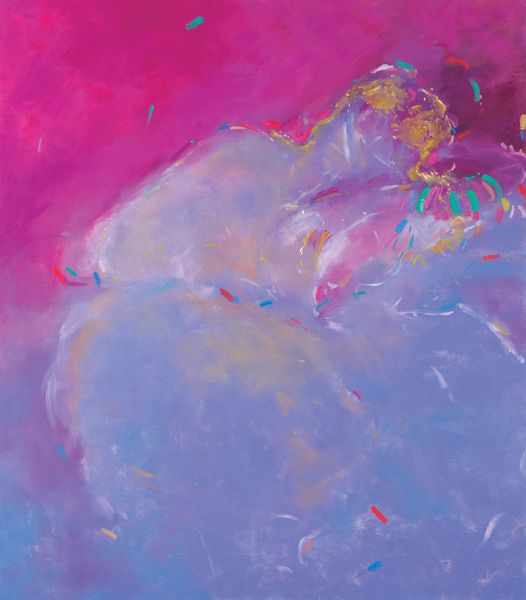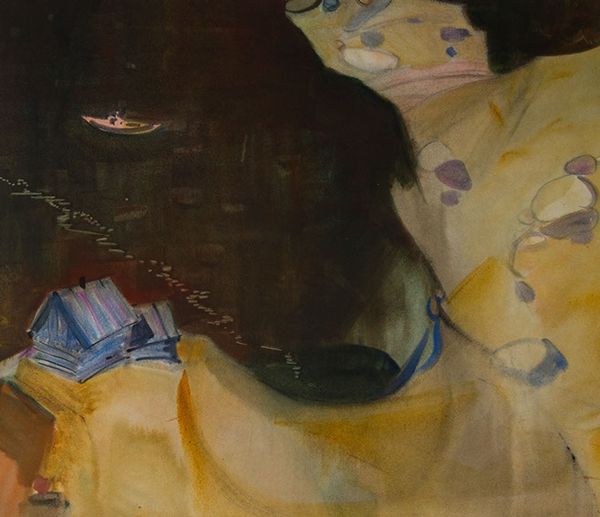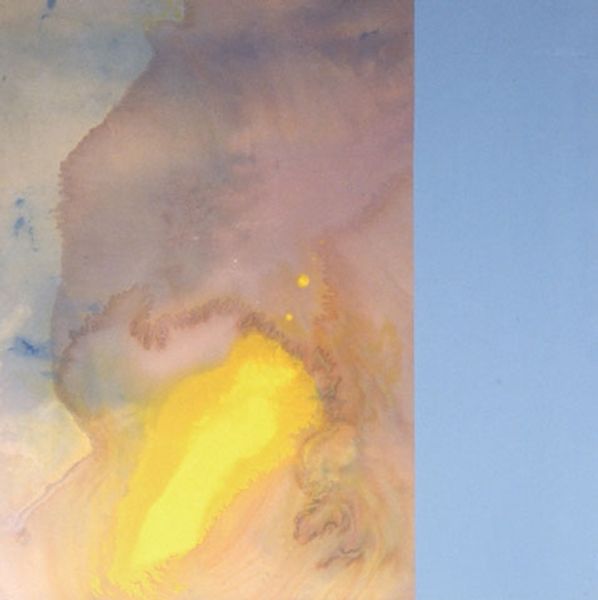
Copyright: Agnes Lawrence Pelton,Fair Use
Editor: We’re looking at Agnes Pelton’s "Untitled," painted in 1931, using tempera. It strikes me as incredibly serene, almost otherworldly. What do you see in this piece? Curator: What strikes me is how this tranquility emerges from a period of significant social upheaval. Consider the context: the Great Depression deeply affected American life, and art became a space to explore alternative realities. Pelton, and others like her, turned to abstraction and symbolism. Do you think that informs your sense of its "otherworldly" quality? Editor: That's a great point. It’s like she’s offering an escape. The shapes, particularly those geometric mountains under that star, feel symbolic, but of what? Curator: Precisely! Her symbols resonate with the spiritual and philosophical movements gaining traction in the early 20th century. Abstraction provided freedom from direct representation. Does knowing this change your interpretation of the bird? Editor: Absolutely. It makes me think about aspiration and the soul's journey, more than just a literal bird. Were her works widely exhibited during this time? Curator: Pelton, though part of the Transcendental Painting Group, faced challenges. Abstract art had a complicated relationship with the dominant social realism. Her explorations of inner landscapes offered a stark contrast, receiving varied critical reception, underscoring how institutions shape artistic narratives. Editor: That clarifies how cultural context impacted her visibility. I am viewing it differently. I am left with pondering the complex interplay between art, society, and the search for meaning. Curator: Indeed. It highlights how art, even the most seemingly serene, is deeply embedded in the social fabric of its time, reflecting both its anxieties and its aspirations.
Comments
No comments
Be the first to comment and join the conversation on the ultimate creative platform.

